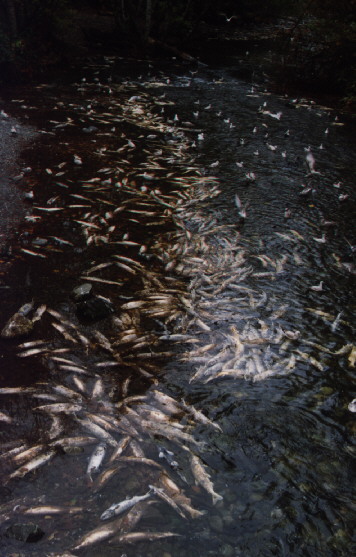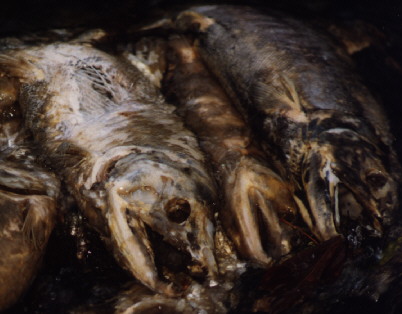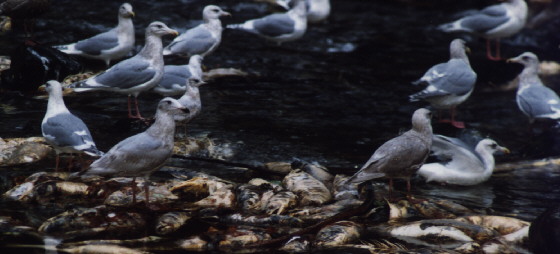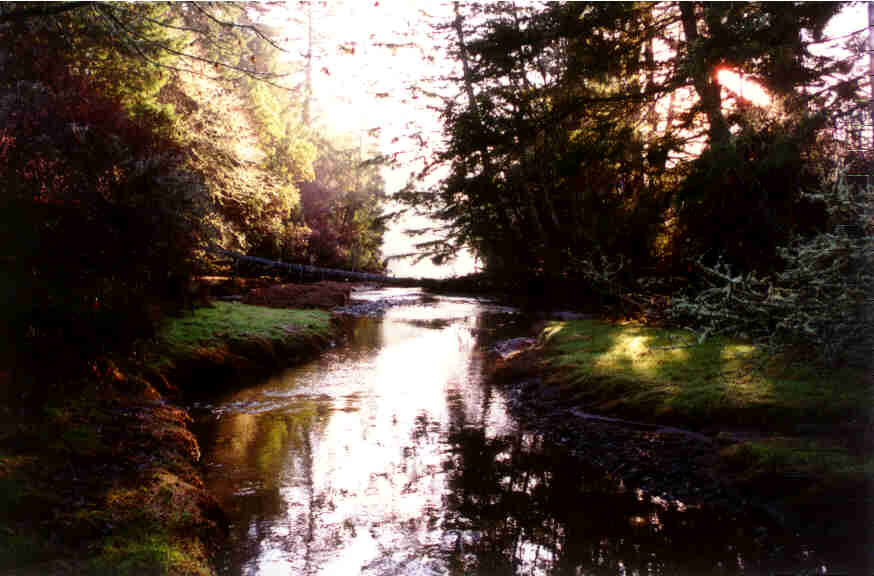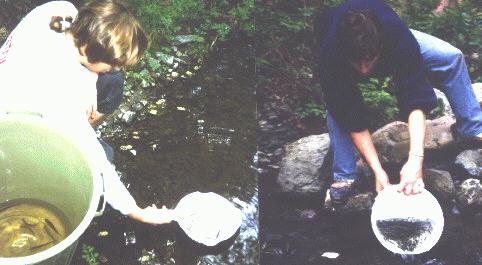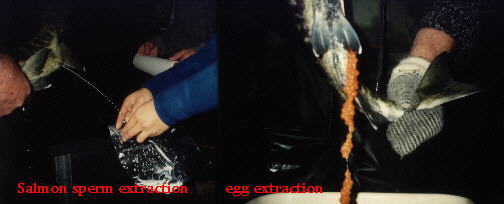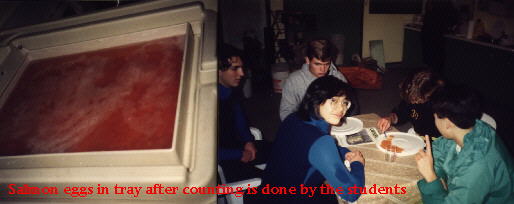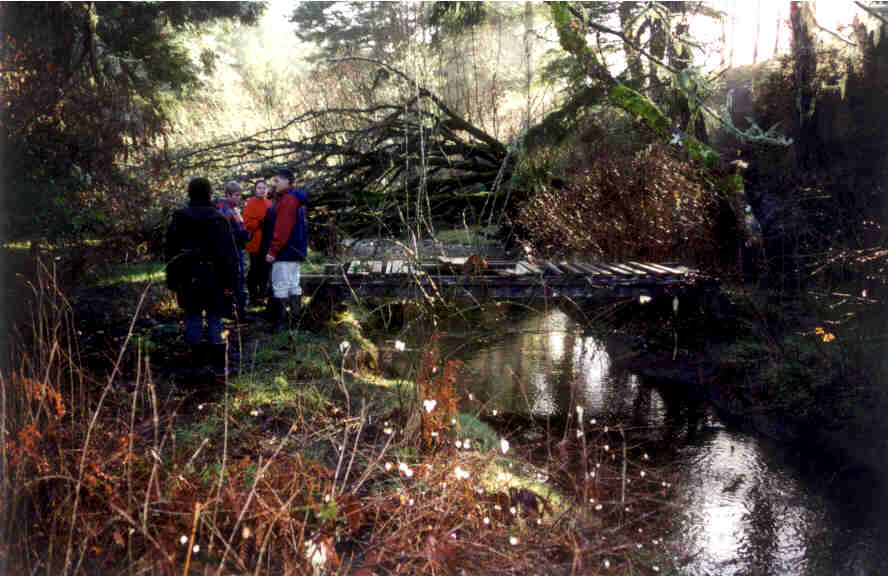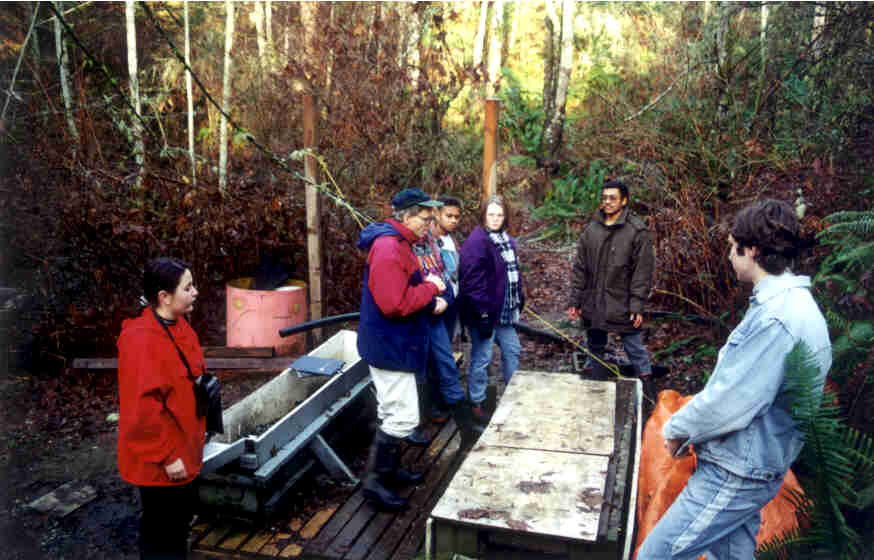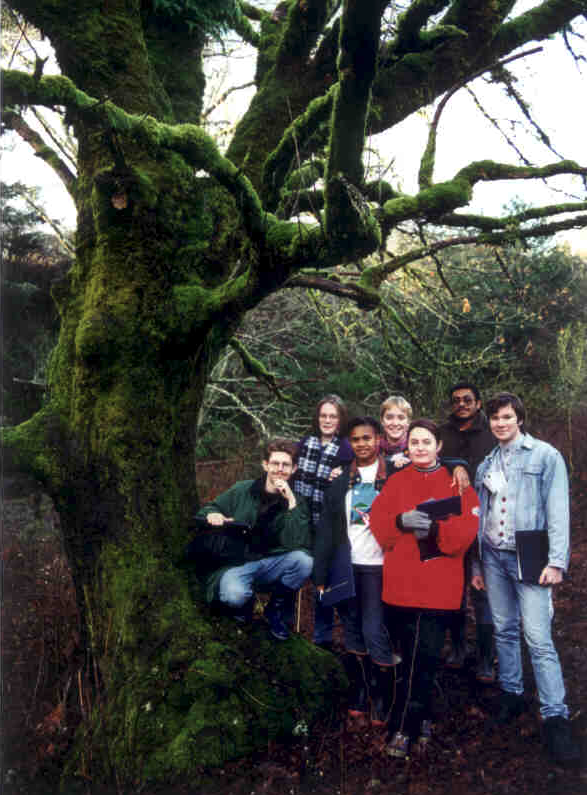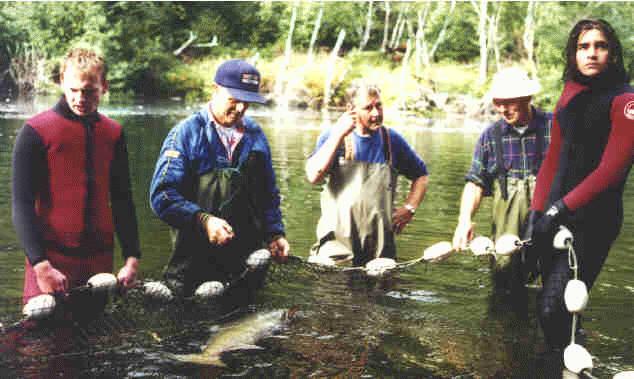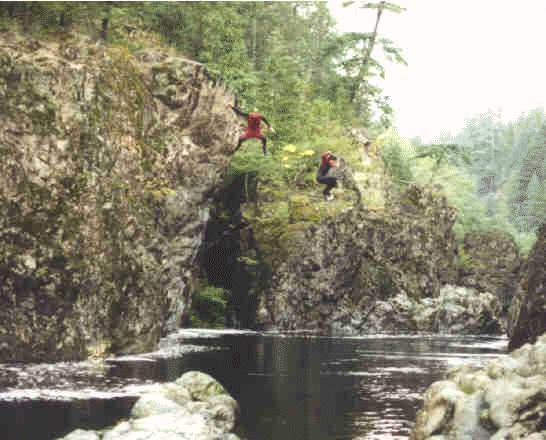Small streams in British Columbia provide habitat for spawning salmon in October. The salmon continue to play a role in the ecosystem after spawning,providing nutrient for gulls, eagles and bears, as well as a whole web of invertebrate fauna and decomposers in the streams and estuaries.
- bead salmon after spawning
- Chum Salmon after spawning
- Energu for the marine and terrestrial ood web
THE PEARSON COLLEGE SALMON ENHANCEMENT PROGRAM: 1984– For several years after 1984
Near Lester Pearson College is a small stream running into Pedder Bay. During the rainy season, from October to May it produces enough run-off to operate an incubation chamber. Several years ago, we built a concrete chamber beside this stream. In it we incubate up to 20,000 salmon eggs a year. In order to get fertilized eggs for the enhancement work, students from Lester Pearson College work with the federal fisheries enhancement program, either by catching salmon in a nearby productive salmon stream. , or getting them from another hatchery.
Extraction of sperm and eggs from the salmon follows.Once the eggs are fertilized, they are counted and placed in incubation trays.The students of the environmental systems class study the estuary, the stream and the incubation box as a set of inter-connected systems.
We work with Chum Salmon as they are mainly destined to help provide food for the marine mammal and bird populations around the southern end of Vancouver island and Race Rocks
- estuary of the stream near Pearson College
- Salmon enhancement box
- Here Shawn and David released the fingerlings into the stream in May.
- catching salmon in Ayum Creek
- stripping eggs
- fertilizing eggs and laying in trays
- estuary where young chum salmon will travel to sea
- environmental systems students at the incubation box
- environmental systems class
SOOKE RIVER SALMON ENHANCEMENT
Along the coast of British Columbia, the return of mature salmon to spawn in small creeks and rivers, is an annual spectacle. In October, Jochen from Germany and Ivan from Panama, (Pearson College students in CoastWatch), were able to assist members of the Sooke River Salmon Enhancement Society with the capture of spawning chinook salmon .
- Ivan from Panama
- Jochen from Germany
- netting salmon in the sooke river
- salmon enhancement volunteers from Sooke
- After a hard morning of catching salmon, two ” LBPC fish” Ivan and Jochen jump into the Sooke Potholes!!
On several weekends in October, a large net is deployed at the Sooke River Potholes by a number of volunteers from the Sooke community. Under the supervision of the Fisheries Department, salmon are removed for eggs that will be incubated in the Sooke River Fish Hatchery. In the spring of the year the juvenile salmon are released to begin their 3-4 year journey in the Pacific before returning the Sooke River to spawn again.
The salmon enhancement program at the college was co-ordinated by faculty member Sylvia Roach . Photos have been contributed by S.Roach, Jan Schaffner and G.Fletcher.
Basic financial support for the program and technical assistance has been made available by the Salmonid Enhancement Program , funded by the Canadian Department of Fisheries and Oceans.

